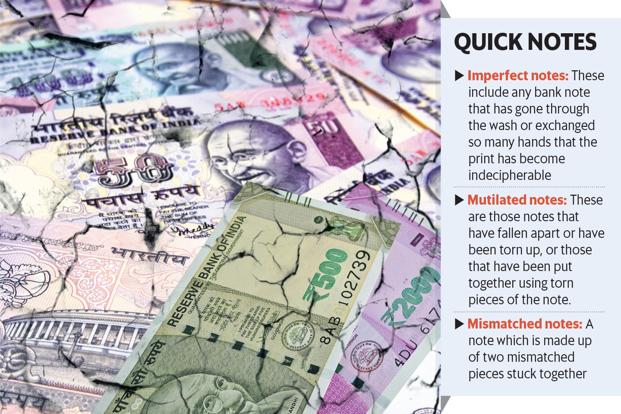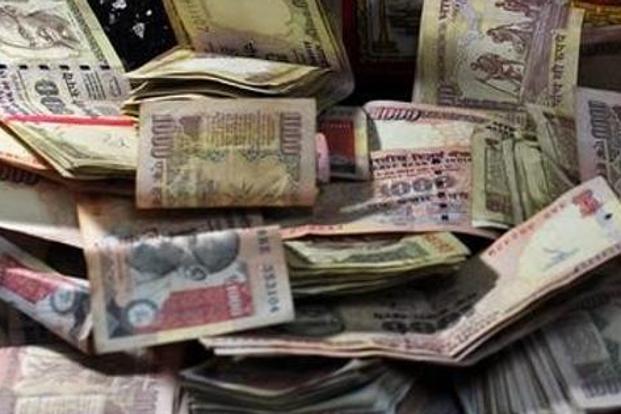What do you do with that damaged currency note the cabbie or the grocery store owner slipped you with your change? Palm it off to the next unsuspecting person you pay in cash, or let it languish in your wallet for months? A better option would be to go to a bank and get it exchanged.
A whole set of new currency notes have come into circulation since demonetisation, including the new denominations of ₹200 and ₹2,000 notes. However, until recently, there was no clarity on regulations for exchanging the new denominations of ₹200 and ₹2,000 notes.
Earlier this month, the Reserve Bank of India (RBI) put out a gazette notification, extending the existing currency exchange rules for other denominations to new denominations of ₹200 and ₹2,000 notes as well.
We tell you how and where you can exchange your damaged currency notes.
Currency notes you can exchange
According to RBI guidelines, three broad categories of currency notes are eligible for exchange or refund. The first category is imperfect notes, including any bank note that has gone through the wash or exchanged so many hands that the print has become indecipherable.
The second is mutilated notes, which refers to currency notes that have fallen apart or have been torn up, or those that have been put together using torn pieces.
The third category is mismatched notes. In the unusual circumstance that you receive a note which is made up of two mismatched pieces stuck together, you can still get it exchanged.
However, you can be refused a refund if the currency notes you turn in are extremely brittle, badly burnt or stuck together in a way that they can’t be separated. If the bank suspects that the notes have been intentionally cut up, it can refuse to replace them.
Currency notes that are written on continue to be legal tender, and you can get a refund against these as well.
“While writing on the currency notes is not illegal per se, any note with slogans and message of a political nature written across it is not considered as legal tender and such notes will not be accepted by the RBI,” said Navin Chandani, chief business development officer, Bankbazaar.

How much is the refund?
Does this mean you can get a refund of the full value of the notes you turn in? That’s not true in all the cases.
In case of mutilated notes, you will get a full refund only if the area of the single largest undivided piece of the currency note is greater than 80% of the total area of an undamaged note. If the largest piece is larger than 40% of the area, but less than 80%, you will only receive half the value of the note. If the largest piece is smaller than 40% of the area, you won’t get a refund at all.
The rules are slightly different for mismatched notes where pieces of two different notes are stuck together. In such cases, the value of the larger piece will be taken into consideration. For mismatched notes of ₹50 or more, the two pieces may be treated as two separate notes, and the refund you receive will depend on the measurements of the individual pieces.
The recent RBI notification, amending the Reserve Bank of India (Note Refund) Rules 2009, clarifies that the same rules will apply to the exchange of ₹200 and ₹2,000 notes as well. “With this change, currency notes of these denominations, which were introduced after demonetisation, can also be exchanged. The procedure for exchanging the (damaged) notes continues to be the same,” said Chandani.
Where can you get the refund from?
You can walk into any bank branch, even if you are not a customer of that bank, to get your damaged notes exchanged. You can also approach RBI directly through one of its regional offices to seek a refund.
However, if you are looking to exchange more than 20 notes, or notes worth ₹5,000 or more, and the bank is unable to give you a refund immediately, the teller can accept them against a receipt, and credit the value to you within 30 days. They can also levy a service charge on the exchange in this case.
For an amount above ₹5,000, a bank branch might redirect you to a chest bank. These are branches authorised by RBI to stock and distribute currency notes and coins to other branches in the area.
You can use damaged notes to pay utility bills and taxes or deposit them in a savings bank account. These notes are not returned into circulation.
Even the new notes that came after demonetisation are gradually getting worn out. With a little extra effort, you can salvage the value of all those tattered and soiled notes you end up with.


